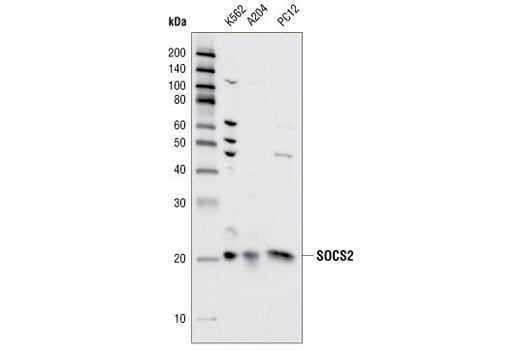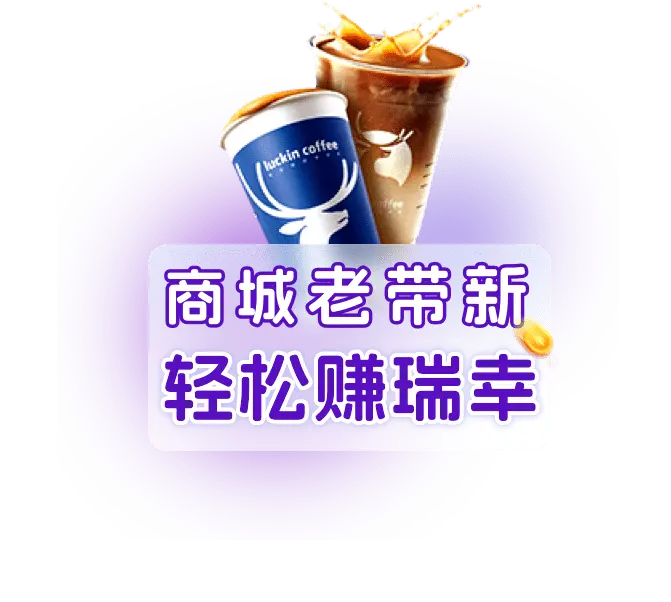 全部商品分类
全部商品分类
产品介绍
产品介绍
产品信息
荧光素标记
抗原名称
SOCS2

来源纯化
Polyclonal antibodies are produced by immunizing animals with a synthetic peptide corresponding to residues at the carboxyl terminus of human SOCS2. Antibodies are purified by peptide affinity chromatography.

宿主
Rabbit

商品描述
Product Usage Information
| Application | Dilution |
|---|---|
| Western Blotting | 1:1000 |
| Immunoprecipitation | 1:100 |

分子量
22

内毒素水平
猴

研究领域
免疫学和肿瘤学,神经科学,

应用
反应种属
Human,Mouse,Rat,

预测反应种属
Monkey

目标/特异性
Specificity/Sensitivity
SOCS2 Antibody detects endogenous levels of SOCS2 protein.
Species Reactivity:
Human, Mouse, Rat

敏感性
Endogenous

背景
背景
The suppressor of cytokine signaling (SOCS) family members are negative regulators of cytokine signal transduction that inhibit the Jak/Stat pathway (1-3). The SOCS family consists of at least 8 members including the originally identified cytokine-inducible SH2-containing protein (CIS1), as well as SOCS1-7. Each SOCS family member contains a central SH2 domain and a conserved carboxy-terminal motif designated as the SOCS box. These proteins are important regulators of cytokine signaling, proliferation, differentiation, and immune responses.Activity of SOCS2 has been predominantly linked to growth hormone (GH) and insulin-like growth factor 1 (IGF-1) signaling but may also contribute to several biological processes including metabolism, bone formation, neuronal development, cancer, infection and other cytokine-dependent pathways (5). SOCS2 is widely expressed in adult and fetal tissues and is induced upon cytokine treatment (5,6). A number of studies suggest that SOCS2 can have either a positive or negative effect on GH/cytokine signaling (7-10). Mice deficient in SOCS2 grow signficantly larger than normal littermates (8). SOCS2 binds to tyrosine-phosphorylated GH and IGF-1 receptors via its SH2 domain, suppressing their signaling (6,9). In addition, the SOCS box of SOCS2 binds to Elongin B and C leading to activity as a ubiquitin ligase, promoting the degradation of the receptors as well as other SOCS family members (11-13).
1.Alexander, W.S. et al. (1999) J Leukoc Biol 66, 588-92.
2.Chen, X.P. et al. (2000) Immunity 13, 287-90.
3.Hilton, D.J. et al. (1998) Proc Natl Acad Sci USA 95, 114-9.
4.Rico-Bautista, E. et al. (2006) Cytokine Growth Factor Rev 17, 431-9.
5.Starr, R. et al. (1997) Nature 387, 917-21.
6.Dey, B.R. et al. (1998) J Biol Chem 273, 24095-101.
7.Favre, H. et al. (1999) FEBS Lett 453, 63-6.
8.Metcalf, D. et al. (2000) Nature 405, 1069-73.
9.Greenhalgh, C.J. et al. (2002) J Biol Chem 277, 40181-4.
10.Greenhalgh, C.J. et al. (2005) J Clin Invest 115, 397-406.
11.Tannahill, G.M. et al. (2005) Mol Cell Biol 25, 9115-26.
12.Bullock, A.N. et al. (2006) Proc Natl Acad Sci U S A 103, 7637-42.
13.Piessevaux, J. et al. (2006) J Biol Chem 281, 32953-66.

研究领域
免疫学和肿瘤学,神经科学,
翻译后修饰
unmodified

制备和贮存
保存方式
Supplied in 10 mM sodium HEPES (pH 7.5), 150 mM NaCl, 100 µg/ml BSA and 50% glycerol. Store at –20°C. Do not aliquot the antibody.
数据库链接
Entrez-Gene ID
8835

UniProt ID
O14508

参考图片
Western blot analysis of extracts from K562, A204 and PC12 cells using SOCS2 Antibody.
声明 :本官网所有报价均为常温或者蓝冰运输价格,如有产品需要干冰运输,需另外加收干冰运输费。








 用小程序,查商品更便捷
用小程序,查商品更便捷




